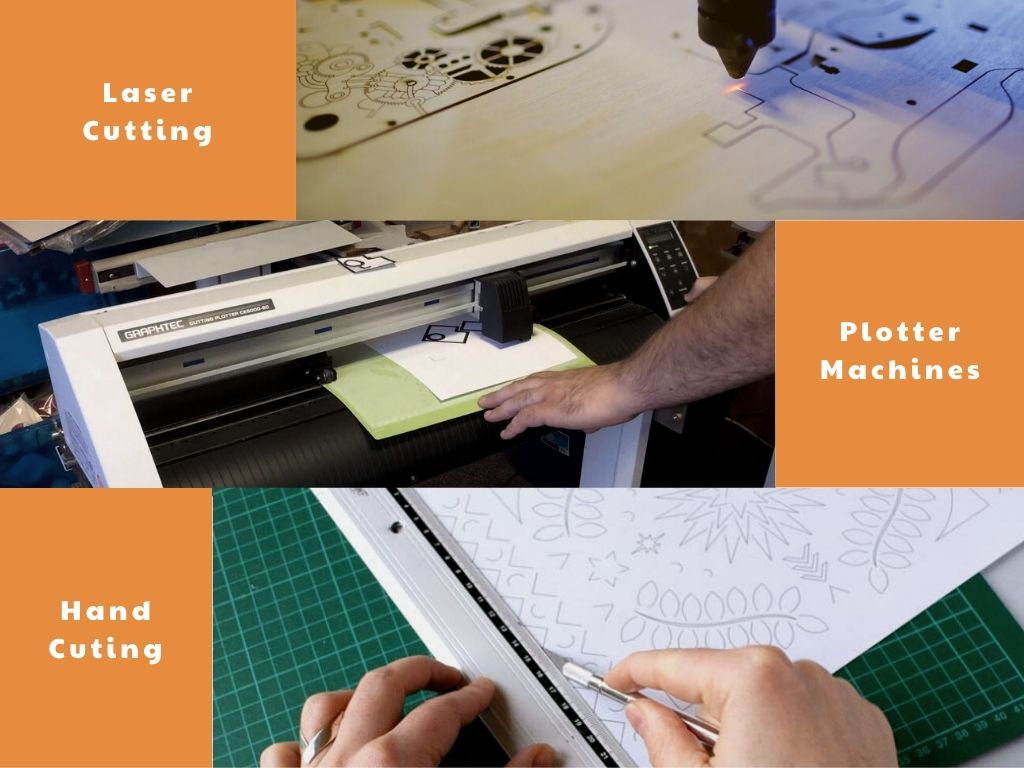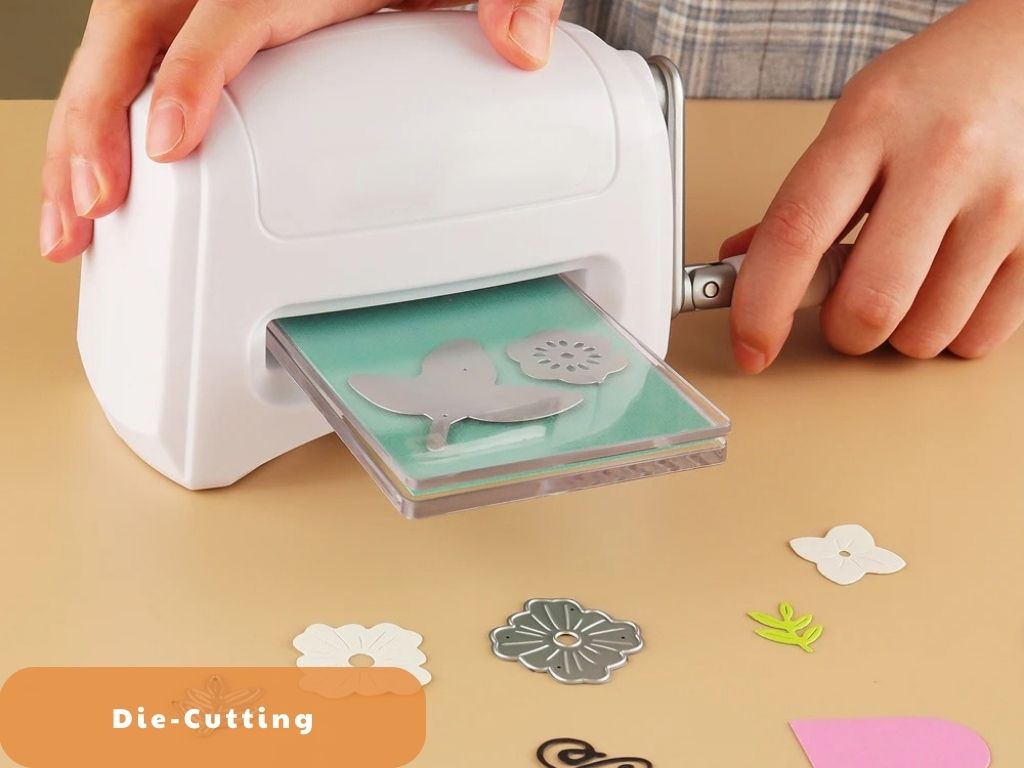
Blog
Best Paper-cutting Technique To Make Pop-up Cards

Welcome to our journey into the artful world of paper-cutting technique, a craft where simplicity meets elegance. In this blog, we’ll explore the various techniques of transforming paper into extraordinary art. From the classic snip of scissors to the precision of laser beams, each method unveils a unique dimension of creativity. Whether you’re just starting to dip your toes into paper-cutting technique or are a seasoned artist looking for new inspiration, this exploration is bound to enhance your appreciation for the delicate art of paper-cutting technique. Join us as we unfold the secrets of this timeless craft.
How Many Paper-cutting Technique Are There?
In the artful realm of paper-cutting techniques, a variety of ways come together to create mesmerizing pieces. Each method opens a different door in paper-cutting, from the hands-on touch of traditional scissors to the sleek precision of modern lasers. Whether you’re crafting a delicate piece of personal art or producing designs en masse, there’s a technique to suit every aspiration and project scale. Let’s embark on a journey through these paper-cutting methods, each with its own charm and intricacies.

- Hand Cutting is the traditional approach, where a simple pair of scissors or a craft knife can bring a design to life. This method calls for a steady hand and a vivid imagination, ideal for bespoke, one-of-a-kind creations.
- Digital Cutting with Plotter Machines are technical tools used to mechanically cut out graphics, text, and various shapes from materials like paper, thin wood, plastic, adhesive film, cardboard, and even rubber for things like sealing rings. They work similarly to regular printers but differ in that they produce vector graphics instead of pixel-based images. This makes them suitable for a range of precise cutting tasks in various creative and industrial applications.
- Laser Cutting paper is a precise and clean method, ideal for achieving detailed cuts without any distortion. This technique, typically using CO2 lasers, allows for extremely fine details and complex designs. It’s gentle on the paper, not putting any mechanical stress on the cutting point, which results in neat, undistorted edges. The quality of the cut is comparable to traditional hard tooling methods but without the need for custom tools.

- Punch Cutting is an old craft from traditional typography, where craftsmen cut steel letter punches as the first step in making metal types. These steel punches, shaped like letters, were used to create impressions in copper to form matrices. These matrices were then used in a mold to cast the type. This process was foundational to traditional typesetting. The craft of cutting letter punches required a lot of skill, patience, and practice.
- Die Cutting in crafting is all about using a machine to quickly make lots of cut-out shapes that are all exactly the same. Instead of cutting each shape by hand with scissors or a craft knife, this machine does all the work for you. It’s a huge time-saver and ensures that your shapes are uniform and professional-looking every single time.
The Best Paper-cutting Technique For Pop-up Cards
Die Cutting is a paper-cutting technique used after printing to shape material into a specific design. This process involves a steel cutting die or sharp blade molded into the desired shape. Die cutting is highly efficient, repeatedly producing identical shapes without the need for manual cutting tools like scissors or craft knives. It’s a time and cost saver, ensuring that the shapes come out looking uniform and professional in every batch.

- Unmatched Precision and Detail: Die cutting’s foremost advantage lies in its ability to execute extremely detailed and precise cuts. This makes it an ideal choice for intricate paper projects where every cut needs to be sharp and accurate. The technology allows for the replication of complex designs with a level of precision that manual cutting methods cannot match.
- Adaptable Across Various Paper Densities: Another key benefit is its adaptability. Whether working with thin, delicate paper or thicker cardstock, die-cutting handles different densities with ease.
- Customizability: This adaptability extends to customization as well, offering the ability to tailor designs to specific project requirements. From personalized greeting cards to detailed scrapbook layouts, the potential for customization is vast, making it a favorite among creative professionals and hobbyists alike.
- Efficient Production Process: In terms of production efficiency, die cutting stands out, especially in projects requiring high volume. The ability to produce consistent, uniform shapes at a rapid pace significantly reduces production time. This efficiency is crucial in commercial settings where meeting tight deadlines without compromising on quality is essential.
- Operational and Environmental Considerations: The die-cutting process can generate dust, requiring adequate ventilation and cleaning measures. It also tends to consume more energy compared to some manual cutting techniques. Additionally, the initial setup, particularly for custom dies, can be a substantial investment, a factor that small businesses or individual crafters need to consider.
Laser Cutting involves using a beam of coherent photons to precisely deliver high energy to a focused area, creating a hot spot. This intense beam causes materials to melt, vaporize, or ablate. It’s used on a variety of materials and employs different laser sources like CO2-driven lasers, metal-doped silica glass NdYAG, and doped liquid crystal devices, especially at lower power levels.

- High Precision and Intricacy: This method is renowned for its ability to produce extremely detailed cuts with a high level of precision. The narrow laser beam allows for the execution of intricate designs, even on delicate or complex paper substrates, making it ideal for detailed crafts.
- Clean Cutting Process: Unlike traditional cutting methods that may require the use of coolants or lubricants, laser cutting is a cleaner process. There is no direct contact with the paper, thus avoiding contamination or the need for subsequent cleaning. This aspect is particularly beneficial for paper crafts where a clean finish is essential.
- Speed and Unlimited 2D Complexity: Laser cutting excels in processing speed. It is capable of handling complex 2D designs much faster than traditional methods like bandsaws or wire cutting. This efficiency makes it a preferred choice for projects that require a quick turnaround.
- Versatility in Paper Types: Laser cutting is adaptable to a wide variety of paper types. Its flexibility in handling different paper densities makes it a versatile tool for various creative applications.
- Energy Consumption and Operational Costs: The process typically consumes more energy than other paper-cutting tools, which might be a consideration for larger projects or environmentally conscious practices. Additionally, the initial investment in laser-cutting equipment can be significant.
The choice of paper-cutting technique for your projects, whether it’s laser cutting or die cutting, hinges on balancing practicality with creative ambition. Each method has its own set of strengths, from precision and cleanliness to efficiency and adaptability, and also its challenges, including energy consumption, operational costs, and safety considerations. For both enthusiasts and professionals, understanding these methods is crucial to turning simple designs into striking works of art. Your decision should be driven by the specific needs of your project, ensuring that the end result is not only visually appealing but also crafted efficiently and safely.
🌐 Check out more at our website: https://kiricard.com/
✉️ Contact us: contact@kiricard.com
📞 Whatsapp: (+84) 931 57 6969





 Christmas
Christmas Father’s Day
Father’s Day Valentine’s Day
Valentine’s Day Easter
Easter Thanksgiving
Thanksgiving Halloween
Halloween
 Birthday
Birthday Wedding
Wedding Anniversary
Anniversary Graduation
Graduation Baby Shower
Baby Shower House Warming
House Warming
 For Him
For Him For Her
For Her For Kids
For Kids
 Floral
Floral Animals
Animals Trees
Trees Architecture
Architecture Vehicle
Vehicle LGBTQ+
LGBTQ+ Just Because
Just Because
 Pop-up Box
Pop-up Box Pop-up Stand
Pop-up Stand